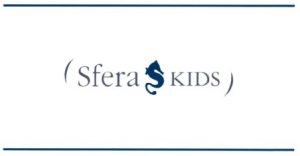BACKGROUND TO THE DISPUTE
On 21 September 2016, the other party to the proceedings, Andrzej Koc , filed an application for registration of an EU trade mark with the European Union Intellectual Property Office (EUIPO). Registration as a trade mark was sought for the word sign SFORA WEAR. The goods for which registration was sought are in Classes 18, 24 and 25 of the Nice Agreement.
On 20 January 2017, the applicant, Sfera Joven, SA, filed a notice of opposition against the registration of the mark applied for. The opposition was based on the following earlier marks:
– The EU figurative mark registered under number 9806481, designating goods in classes 18 and 25:

– The EU figurative mark registered under number 13579172, designating goods in class 24:

The opposition was based on Article 8(1)(b) of Regulation No 207/2009 (now Article 8(1)(b) of Regulation 2017/1001).
On 25 June 2018, Andrzej Koc requested that the applicant prove that the earlier figurative mark Sfera KIDS had in fact been used. In November 2018, the applicant provided evidence to prove genuine use of that mark.
On 17 July 2019, the Opposition Division partially upheld the opposition based on the earlier figurative mark Sfera, finding that, in respect of some goods, there was a likelihood of confusion. However, it found that the remaining goods were not similar. The Opposition Division also rejected the opposition based on the earlier figurative mark Sfera KIDS on the ground that the applicant had failed to prove genuine use of that mark.
On 11 September 2019, the applicant filed an appeal with EUIPO against the Cancellation Division’s decision. By decision of 15 May 2020, the First Board of Appeal of EUIPO dismissed the appeal and upheld the decision of the Opposition Division. First, it found that no genuine use of the earlier figurative mark Sfera KIDS had been demonstrated in respect of the goods in classes 18 and 25 covered by that mark. Secondly, the Board of Appeal found that there was no similarity between those goods. It therefore considered that there was no likelihood of confusion between the mark applied for and the earlier figurative mark Sfera.
DECISION OF THE GENERAL COURT
First plea in law, alleging infringement of Article 10(4) of Delegated Regulation 2018/625
Genuine use of a trade mark cannot be proved by probabilities or assumptions, but must be established by solid and objective evidence of genuine and sufficient use of the mark on the relevant market (Case T 39/01 Kabushiki Kaisha Fernandes v OHIM – Harrison (HIWATT ), EU: T 39/01, EU T: 2002: 316, paragraph 47, and Case T 356/02 Vitakraft-Werke Wührmann v OHIM – Krafft (VITAKRAFT), EU T: 2004: 292, paragraph 28).
The evidence adduced by the applicant before EUIPO consists, in essence, of printouts of pages from websites containing photographs of children wearing different types of clothing, a printout of a page from the website of El Corte Inglés, a picture of a shop mentioning the earlier trade mark Sfera and documents showing the turnover of Spanish companies, including that of El Corte Inglés.
The Board of Appeal found that, with the exception of four pieces of evidence which did not relate to the relevant period or were not dated, all the others related to the relevant period. Furthermore, it found, as regards the goods designated by the earlier mark Sfera KIDS, that there was no evidence of use for goods in class 18 and little or no evidence of use for footwear, headgear and clothing in class 25. It also observed that, although the evidence could demonstrate a link between the earlier mark Sfera KIDS and the ‘clothing’ in class 25 covered by that mark, there was insufficient evidence to establish the extent of its use.
In conclusion, it must be held that the Board of Appeal correctly assessed the facts of the case. The first plea must therefore be rejected as unfounded.
Second plea in law, alleging infringement of Article 8(1)(b) of Regulation No 2 07/2009
The examination of a possible similarity between the goods covered by the mark applied for and by the earlier mark must be carried out by reference to the list of goods covered by those two marks (judgment of 30 September 2015, KARIS, T 720/13, not published, EU: T: 2015: 735, paragraph 47). Therefore, the applicant’s argument that, in essence, there is a close link between the goods in question, in so far as, in the Nice Classification, there are goods in Class 24 which are related to goods in Classes 18 and 25, is irrelevant, given that those goods do not correspond to the goods covered by the earlier mark Sfera and the mark applied for.
The Board of Appeal was able to conclude that the goods at issue were different, since, moreover, the applicant did not put forward any argument capable of calling that assessment into question.
Consequently, the second plea must be rejected as unfounded and, consequently, the action must be dismissed in its entirety.
In so far as the existence of a likelihood of confusion presupposes both that the conflicting marks are identical or similar and that the goods or services covered are identical or similar, the finding that there is no likelihood of confusion as regards the mark applied for and the earlier mark Sfera must be upheld.
JUDGMENT OF THE GENERAL COURT (SECOND CHAMBER) 8 SEPTEMBER 2021. CASE T 493/20


 Español
Español Deutsch
Deutsch